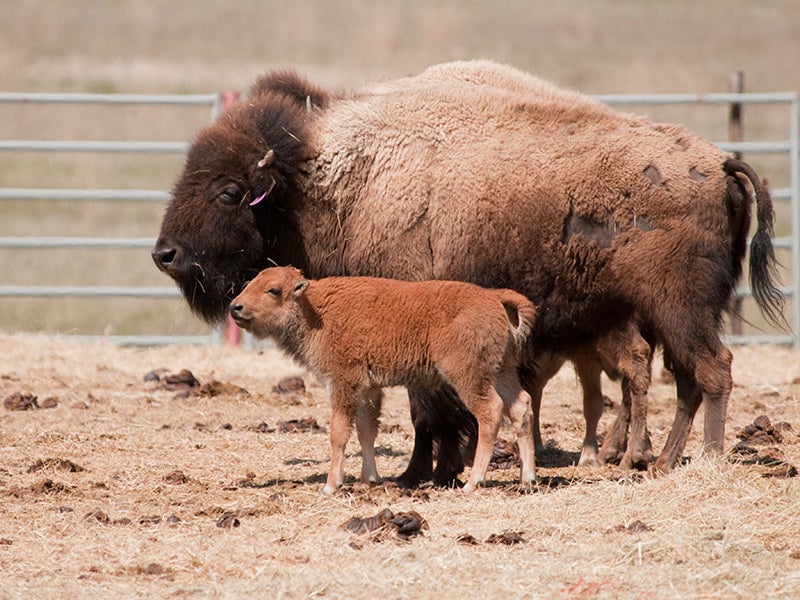Bison: Wildlife or Livestock?
As wild bison return to the plains, ranchers target them as livestock

This page was published 12 years ago. Find the latest on Earthjustice’s work.
Now that the court battles have been won and the wild bison are back on tribal reservations, the anti-bison interests are at it again.
The latest tactic is to get a Montana court to declare that the transplanted bison are “livestock” instead of “wildlife” under state law if they leave the reservations and roam on to public or private lands. Not only would this require treating roaming wild bison just the same as stray cattle, but it would likely put up a major roadblock to additional bison restorations in the future, as wildlife managers would have no authority to transplant animals classified as “livestock” under the law.
Earthjustice filed a brief today in response to this new effort to prevent bison restoration.
The bison in question originated from Yellowstone National Park and were relocated over the past two years to their historic prairie habitat on the Fort Belknap and Fort Peck Indian Reservations. These are genetically pure bison from a herd that rebounded from near-extinction, growing from a couple of dozen animals to more than 4,000. Bison originating from Yellowstone represent the best hope for future restorations of this iconic species to suitable habitat on the Great Plains.
But some politically powerful cattle ranching interests in Montana don’t want to share the range with the state’s native bison. As Earthjustice attorney Tim Preso, who has been handling the bison casework says:
Anti-bison interests originally filed this case to stop Native Americans from bringing wild bison back to their reservation lands.
Having failed to accomplish that, they are now trying to convince a court to classify wild bison as livestock, which would require treating wild bison like cows escaped from a feedlot instead of wild animals that are a valued part of our natural heritage.
We are opposing this gambit because we want to see a future in which wild bison can once again roam as wildlife across suitable habitats in Montana.
Established in 1993, Earthjustice's Northern Rockies Office, located in Bozeman, Mont., protects the region's irreplaceable natural resources by safeguarding sensitive wildlife species and their habitats and challenging harmful coal and industrial gas developments.